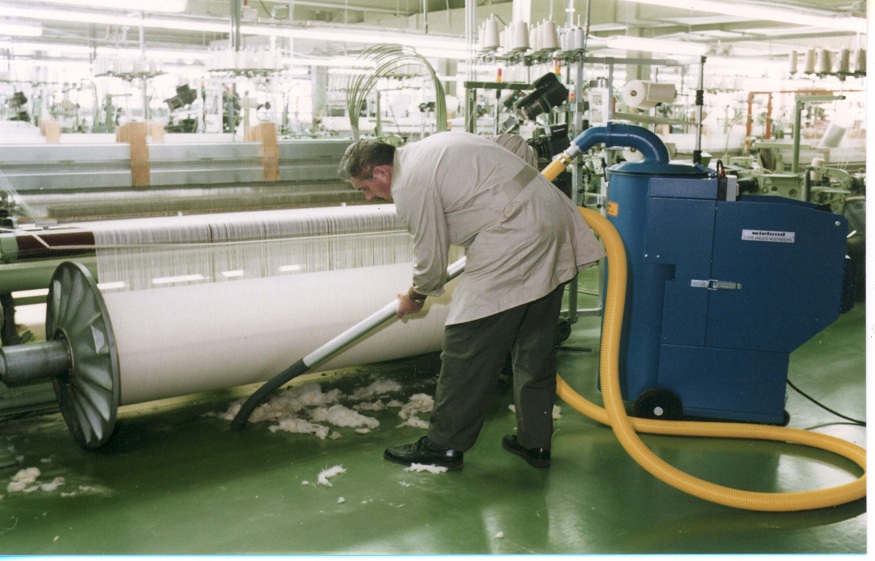The Impact of Industrial Vacuum Systems on Worker Safety and How to Ensure Proper Use

Industrial vacuum systems have become an indispensable tool for a variety of applications in various industries, including construction, manufacturing, and many others. These systems are designed to remove and collect hazardous materials, dust, debris, and other pollutants from the air, making the workplace safer and healthier for workers. Despite their numerous benefits, industrial vacuum systems can pose a risk to worker safety if they are not used properly. In this article, we will discuss the impact of industrial vacuum systems on worker safety and how to ensure their proper use.
Advantages of Industrial Vacuum Systems for Worker Safety
Industrial vacuum systems provide a safer working environment by removing hazardous materials, dust, and debris from the air. This reduces the risk of respiratory problems and other health issues that can arise from inhaling dangerous pollutants. By reducing the amount of airborne pollutants, industrial vacuum systems also reduce the risk of fire and explosion. In addition, these systems also improve indoor air quality, which can help to improve worker morale and increase productivity.
The Dangers of Improper Use of Industrial Vacuum Systems
Despite the many benefits of industrial vacuum systems, if they are not used properly, they can pose a serious risk to worker safety. One of the most common dangers is the risk of injury from entrapment or entanglement. For example, if a worker’s clothing or hair gets caught in the vacuum system’s suction hose or fan blades, it can result in serious injury or even death.
Another danger of improper use is the risk of exposure to hazardous materials. If the vacuum system is not properly maintained and the filters are not replaced regularly, hazardous materials can escape into the air, exposing workers to dangerous pollutants. Additionally, if the vacuum system is not properly grounded, it can create a static electricity hazard, which can ignite flammable materials and cause a fire or explosion.
How to Ensure Proper Use of Industrial Vacuum Systems
To ensure the proper use of industrial vacuum systems and to minimize the risk of worker injury or exposure to hazardous materials, it is essential to follow these best practices:
Proper Training and Education
Workers who operate industrial vacuum systems should receive proper training and education on the safe and effective use of these systems. This should include information on the proper use of the vacuum system’s controls, as well as safety procedures to follow in case of emergency.
Regular Maintenance and Inspection
Industrial vacuum systems should be regularly inspected and maintained to ensure that they are operating properly and that the filters are replaced when necessary. This will help to minimize the risk of exposure to hazardous materials and ensure that the system is working efficiently.
Use of Personal Protective Equipment
Workers should always wear appropriate personal protective equipment when operating industrial vacuum systems. This may include gloves, eye protection, and respiratory protection.
Proper Grounding
Industrial vacuum systems should be properly grounded to minimize the risk of static electricity and to reduce the risk of fire or explosion.
Proper Use of Suction Hoses and Attachments
Workers should always use the proper suction hose and attachments for the task at hand. Hoses should be properly secured to prevent entanglement or entrapment, and attachments should be used to ensure that the vacuum system is being used safely and efficiently.
Conclusion
Industrial vacuum systems provide numerous benefits for worker safety and health, including reducing the risk of respiratory problems and other health issues, improving indoor air quality, and reducing the risk of fire and explosion. However, if they are not used properly, these systems can pose a serious risk to worker safety.
To conclude, industrial vacuum systems are an important tool for creating a safe and healthy workplace, but it is essential to use them properly to minimize the risks to workers. By following best practices such as proper training and education, regular maintenance and inspection, using personal protective equipment, proper grounding, and using the correct suction hoses and attachments, employers can ensure that their workers are protected while using these systems.
It is also important to select the right industrial vacuum system for the job. When choosing a system, consider factors such as the type and amount of hazardous material being collected, the size of the area being cleaned, and the frequency of use. Selecting a system with the appropriate features and capabilities will not only ensure that the job is done correctly but will also minimize the risk of injury or exposure to hazardous materials.
Employers should also be aware of the regulations and standards that apply to industrial vacuum systems. For example, the Occupational Safety and Health Administration (OSHA) has established guidelines for the use of industrial vacuum systems, including requirements for the proper use of personal protective equipment, proper grounding, and proper use of suction hoses and attachments. Employers should be familiar with these regulations and ensure that their workers are trained to follow them. To get the best vacuum systems, you can check out CES!







